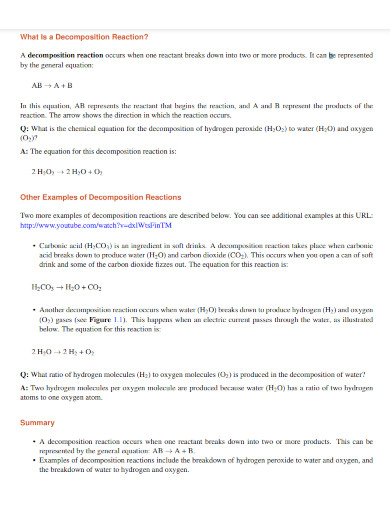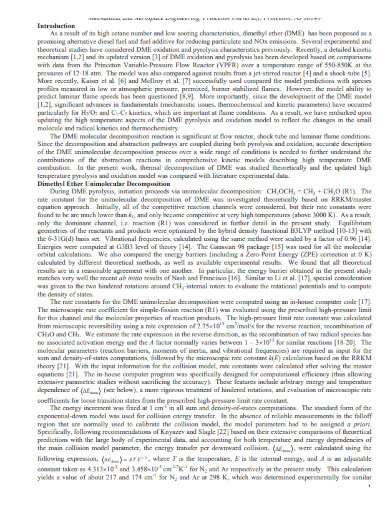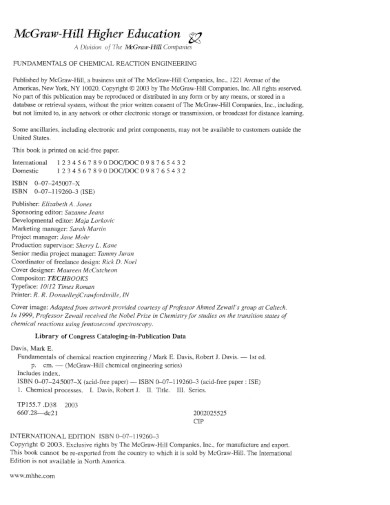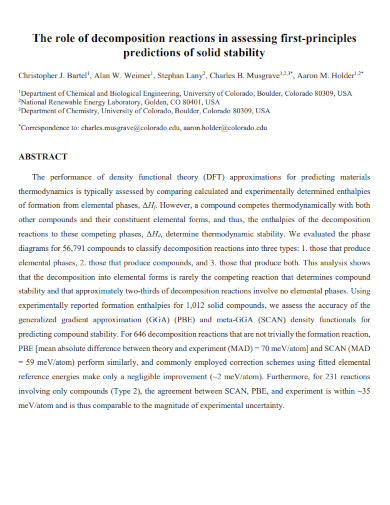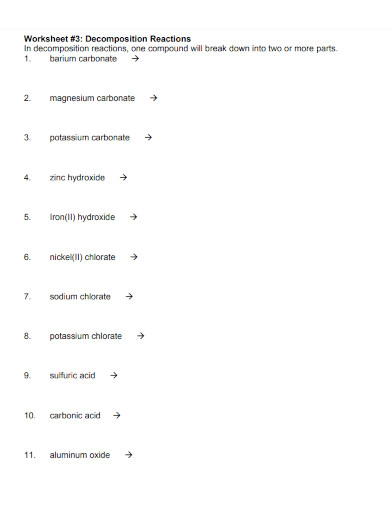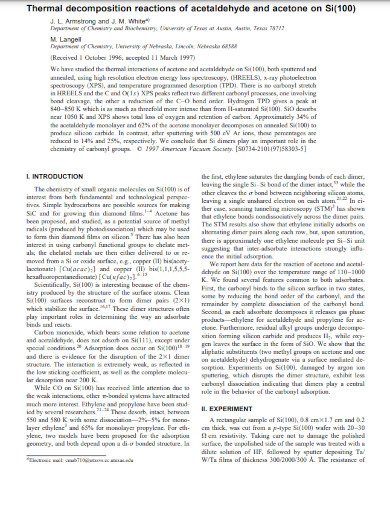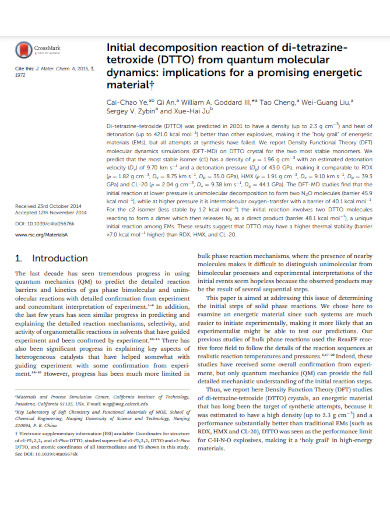What is a decomposition reaction?
A reaction where two compounds combine to form one compound.
A reaction where a compound breaks down into two or more simpler substances.
A reaction where elements are exchanged between compounds.
A reaction where a compound is synthesized from simpler substances.



